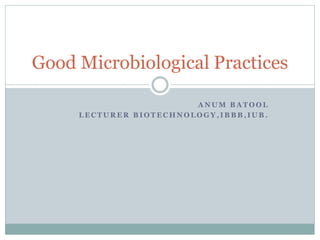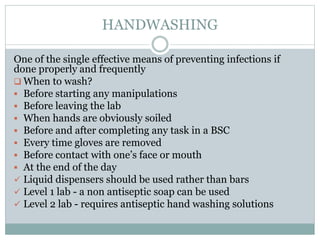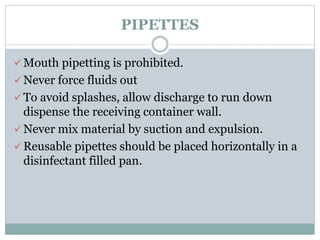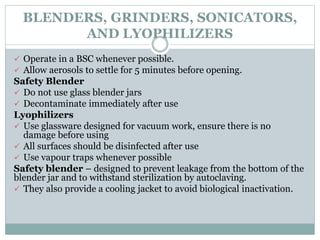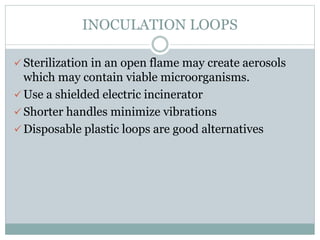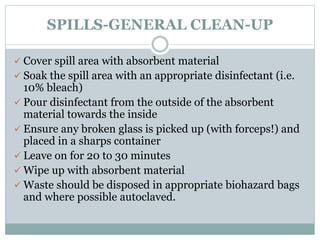The document outlines good microbiological practices (GMP) essential for laboratory work with microorganisms, focusing on contamination prevention and safety protocols. Key practices include proper handwashing, safe use of equipment like centrifuges and pipettes, and effective spill response procedures. It emphasizes the importance of personal protective measures, decontamination techniques, and adherence to established guidelines to ensure laboratory safety and environmental protection.
